Saturday, 22 November 2025

Image Source: Canva
Millets, once sidelined as subsistence grains, are now recognized as central to future global food security, nutrition, and climate resilience. Backed by rising R&D, increasing global demandrecognition, and policy innovation—especially in India and Africa—millets are transforming into strategic crops. Their low water needs, rich micronutrient profile, and adaptability to degraded soils make them superior to rice and wheat under climate stress. Yet, risks around market awareness, product development, advanced research to maximize yields and commercialization inequities, and weak market infrastructure persist. Making millets mainstream isn’t nostalgia—it’s a critical response to the food system’s structural vulnerabilities.
Long dismissed as relics of subsistence farming, millets are undergoing a profound revaluation. No longer mere rural staples, they are now positioned at the intersection of nutrition, sustainability, and geopolitical food resilience. Their rise reflects not a trend, but a response to structural crises—climate volatility, malnutrition, and the fragility of cereal-heavy food systems. Naturally drought-tolerant, nutrient-rich, and low-input, millets thrive where wheat and rice struggle, offering both agronomic adaptability and nutritional value.
Governments, especially in the Global South, are moving fast—offering incentives, reclassifying millets as “smart foods”, “nutri-cereals,” and embedding them in public procurement. This scaffolding is now being bolstered by private capital: Companies like Nestlé are launching millet-based consumer products to meet urban demand. But commercialization carries risk. Without equity safeguards, market expansion could mirror the extractive dynamics of the Green Revolution—centralized control, over-processing or refinement of grains reduced genetic diversity, and marginalization of smallholders.
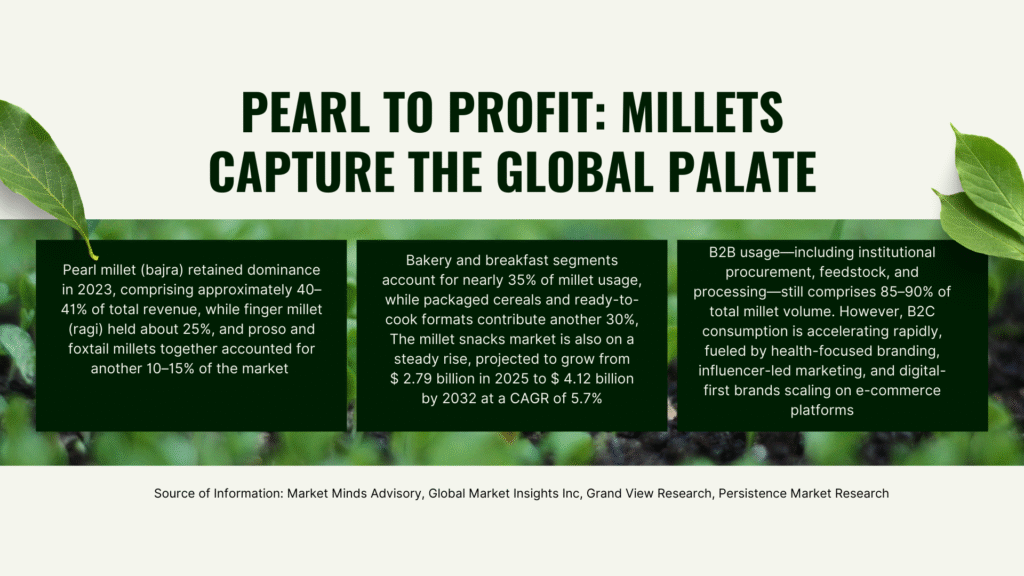
As millets gain traction in global organic and climate-conscious food markets—projected to reach $18.65 billion by 2033—the question is not just how fast they scale, but who benefits. Millets’ future will be shaped by governance. Their renaissance can be transformative—but only if inclusivity, biodiversity, and farmer sovereignty are placed at its core.
The Millet Equation: Linking Biodiversity, Demand, and Policy Innovation
What was once a niche grain relegated to subsistence farms is now evolving into a global strategic commodity. The millets market—projected by Renub Research to grow at double-digit rates—is no longer a fringe play in the grain economy. It sits at the nexus of climate adaptation, clean-label consumerism, and agri-trade diversification.
At the premium end, organic millets are leading the charge. Consumers in North America, Europe, and increasingly Asia-Pacific metros are demanding pesticide-free, nutrient-dense alternatives to conventional grains. Certification systems and traceability protocols are doing the heavy lifting—transforming millet from obscure heritage grain to verified health food. But while the glamour skews organic, the volume game remains grounded. Across India, Nigeria, and Ethiopia, regular millets remain the bedrock of food security—millets are still not the largest staple for the country. They are part of the diets and more significantly the key stakeholders in drought-resilient agriculture.

Meanwhile, infant and functional nutrition are becoming breakout categories. Pediatricians are recommending millet-based foods for their digestibility and micronutrient load, while low-GI breakfast cereals are driving reentry into the urban pantry. Retail is reinforcing this momentum—supermarkets are hosting millet tastings, and digital platforms are curating subscription boxes for everything from Himalayan barnyard millet to African fonio.
Geographically, the United States represents a high-potential growth frontier for millets, propelled by clean-label trends and the demand for gluten-free grains, but the road ahead remains challenging. While the mainstream market is yet to fully embrace these ancient grains, the undercurrents are promising. From a Senegalese chef in New York popularizing fonio on fine-dining menus, to startups reimagining millets as modern health foods, and Indian-origin entrepreneurs catering to diaspora tastes—the groundwork is being laid. The momentum may be niche for now, but it’s culturally vibrant and quietly catalytic. Millets are increasingly positioned as a sustainable alternative to quinoa, especially among consumers seeking climate-resilient and low-GI grains. The Indo-U.S. Millets Initiative, launched in early 2024, has further catalyzed bilateral research, awareness campaigns, and institutional procurement strategies. This initiative, involving the University of Nebraska’s Daugherty Water for Food Global Institute and India’s National Millet Mission, is emblematic of a larger north-south partnership model in agri-innovation.

In Europe, Germany is setting the pace. A strong organic movement, along with robust demand from vegan and health-conscious consumers, has positioned millets as a versatile grain in bakery, cereal, and meal replacement categories. German importers are actively sourcing certified organic millets from India and Africa, while EU policy frameworks on sustainable agriculture are encouraging domestic millet production as well. Eastern Europe has long been a quiet yet significant player in the global millet landscape.
Ukraine, before the war, was among the world’s notable millet exporters—supplying both feed-grade and food-grade varieties. As traditional grain exports from the region face disruption, there is renewed interest in resilient, low-input crops like millet. Hungary, for instance, has begun experimenting not only with expanded millet cultivation but also with diversifying its use—ranging from gluten-free baked goods to millet-based cereals. As climate volatility redefines Europe’s agricultural strategy, millet is no longer just a peasant grain—it is becoming a climate-smart staple with strategic relevance.
India’s dominance is undisputed—both as the world’s largest millet producer and a major policy innovator. The post-2023 landscape, following India’s leadership during the International Year of Millets, has seen concrete developments: public procurement of millets into welfare schemes, millet-based product diversification by major FMCGs, and a growing ecosystem of millet-centric startups. Brands like the Bonn Group have introduced millet-based pizzas, burgers, and breads tailored for urban health enthusiasts, underlining a dual strategy of tradition and modernity.

Saudi Arabia presents a different kind of opportunity. Here, millets are being adopted not just for health, but for strategic reasons—food security, dietary diversification, and import substitution. The Kingdom’s partnerships with millet-exporting nations, such as the 2023 MoU with Mozambique on rural and agricultural development, signal a broader geopolitical interest in resilient crops.
Together, these trends point to a bifurcated but interlinked millet economy—where the global south anchors supply, tradition, and biodiversity, while the global north fuels demand, product innovation, and market formalization.
From Village Thali to Vegan Cafés: The Millet Makeover
Millets are no longer the forgotten grains of subsistence farming—they are fast emerging as nutritional game-changers in a world grappling with both undernutrition and chronic disease. Once overshadowed by rice and wheat, these hardy cereals—such as finger millet (ragi), pearl millet (bajra), foxtail millet, and sorghum—offer a dense nutritional profile that aligns with today’s public health priorities.
Rich in complex carbohydrates and dietary fiber, millets have a naturally low glycemic index (as low as 50 in foxtail millet, compared to 73–90 in polished white rice), making them ideal for managing diabetes and obesity. A 2021 meta-analysis by Smart Food, ICRISAT, covering 65 studies, found that regular millet consumption reduced HbA1c by up to 15 per cent and lowered both fasting and postprandial blood glucose levels.
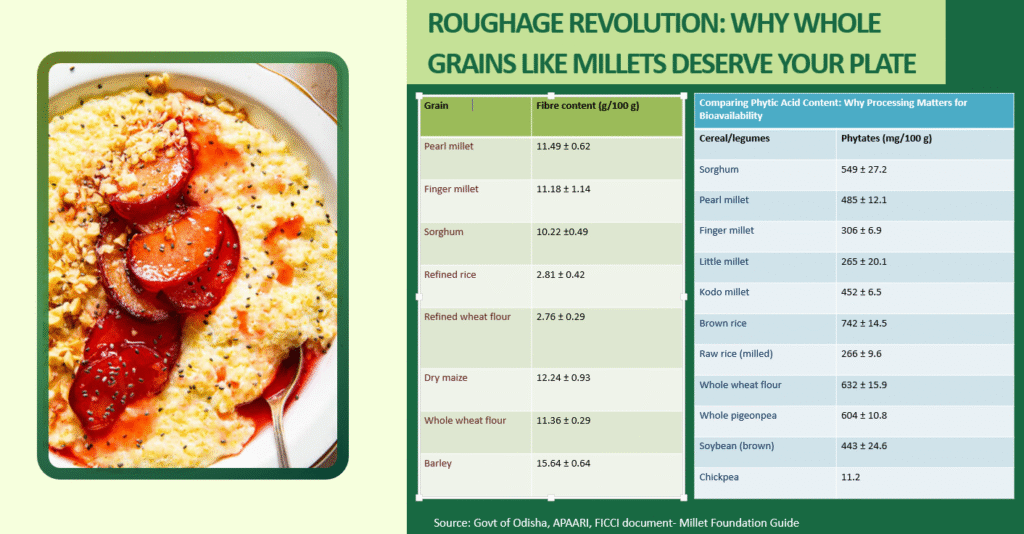
Finger millet stands out with 344 mg of calcium per 100g—nearly ten times more than rice —making it one of the most calcium-rich cereals in the world. This is especially beneficial for bone health in women and children, where calcium deficiency remains rampant: nearly 43 per cent of Indian adolescents fall below the recommended calcium intake (ICMR-NIN, 2021). Pearl millet, meanwhile, dependent on the variety, delivers 8 mg of iron per 100g, positioning it as a powerful tool in addressing anemia, which affects 57 per cent of Indian women aged 15–49 (NFHS-5, 2019–21) and up to 60 per cent of children in sub-Saharan Africa (UNICEF, 2023).
Beyond micronutrients, millets are gluten-free and naturally rich in essential amino acids, B-vitamins, and antioxidants that support immune resilience, cardiovascular health, and digestive wellness. This makes them well-suited for individuals with gluten intolerance or celiac disease and positions them as functional foods for lifestyle disease prevention.
Unlike heavily processed cereals, which lose much of their nutritional value during milling, millets can be consumed in whole form or with minimal processing—preserving their fiber and micronutrient integrity. Their high digestibility also makes them ideal for infant and geriatric nutrition. A 2023 study by the National Institute of Nutrition (Hyderabad) found that millet-based mid-day meals significantly improved growth velocity and cognitive attention in school-aged children.
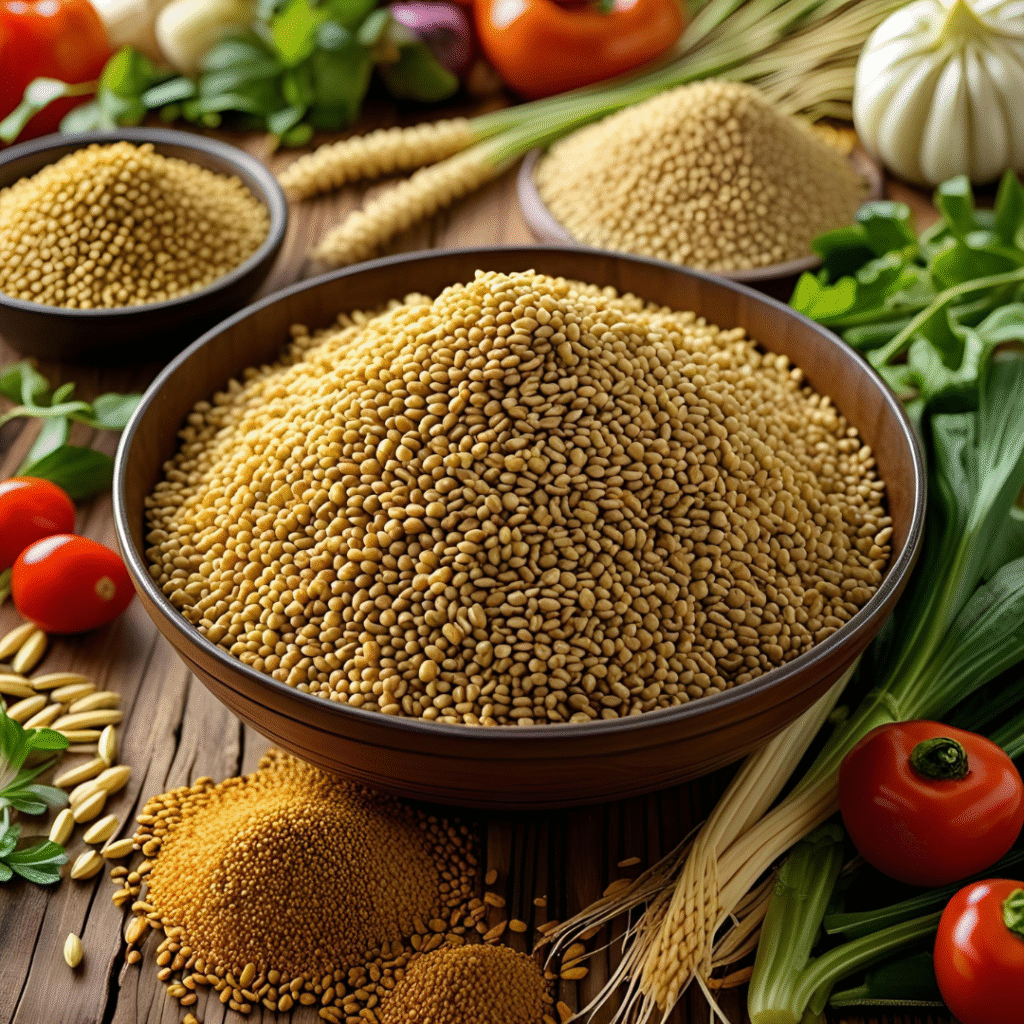
Spurred by the International Year of Millets (2023), countries like India, Kenya, and Ethiopia have institutionalized millets into school feeding programs, public procurement, and nutrition missions. India alone procured 1.1 million metric tonnes of millets in 2023–24 for the PM POSHAN scheme and public distribution systems, while 14 states have already mainstreamed millets into daily school meals (MoAFW, 2024).
In an era dominated by ultra-processed diets and rising rates of diabetes, anemia, and micronutrient deficiency, millets offer not just a nostalgic alternative—but a science-backed, climate-resilient, and nutritionally potent solution to building sustainable, inclusive food systems.
Reclaiming Resilience: Why Millets Matter Now More Than Ever
Millets are uniquely equipped to meet the triple challenge of climate adaptation, nutrition security, and resource-efficient agriculture. As the global food system confronts erratic monsoons, heatwaves, and soil degradation, millets offer an agronomic edge—requiring minimal water, thriving on marginal land, and naturally withstanding drought and heat stress.
Nutritionally, they are dense in iron, calcium, fiber, and amino acids—effective in addressing “hidden hunger” and preventing lifestyle diseases like diabetes and cardiovascular disorders. This rare fusion of ecological and nutritional value places millets at the heart of global sustainability goals.
The International Year of Millets (2023), championed by India and endorsed by the UN FAO, catalyzed a deeper shift: Rising R&D investments, molecular breeding programs, and AI-based agronomy that are transforming millets into a 21st-century smart crop. ICRISAT and partners are leading breakthroughs in biofortification, seed systems, and rapid varietal development.

Globally, countries from Kenya to Saudi Arabia are embedding millets into food strategies to reduce cereal imports and boost resilience. This is not just agricultural revival—it is strategic recalibration. A millet ecosystem is emerging—rooted in tradition, scaled by science, and designed to future-proof food systems in the face of accelerating climate and nutrition crises.
The New Millet Powerhouses: How India and Africa Are Building the Future of Resilient Grains
In the sun-scorched corridors of the Global South, a strategic realignment is taking root—powered not by Big Ag or billion-dollar biotech, but by a humble grain long relegated to the margins. Millets, once dismissed as relics of subsistence, are now driving a quiet but radical shift in the geopolitics of food, with India and Africa at the helm.
At the center of this dryland revolution stand two institutions headquartered in Hyderabad: the Indian Institute of Millets Research (IIMR) and the International Crops Research Institute for the Semi-Arid Tropics (ICRISAT). IIMR has released over 35 high-performance millet hybrids—many biofortified with iron and zinc—positioning the grain not only as a nutritional fix but as a frontline weapon against climate stress and chronic disease.

ICRISAT, meanwhile, is compressing breeding cycles through digital phenotyping and predictive genomics. Its launch of Rapid-Ragi in 2025—enabling four millet breeding cycles per year—signals a paradigm shift in crop science. From India’s Deccan Plateau to Niger’s Sahel, its cultivars like Chakti—an iron-rich, early-maturing pearl millet—are gaining traction as climate-smart staples.
Africa, once viewed solely as a recipient of agricultural aid, is fast emerging as a co-architect of this transformation. In Mali, yield-boosting millet systems are being scaled to one million hectares. In Ethiopia, the UKRI-backed MillNET_i project laid early groundwork on iron bioavailability, marrying food science with local cooking traditions.
This is not aid; it is agri-sovereignty in action. India’s export of millet science and institutional frameworks to Kenya, Mali, and Ethiopia marks a new model of South–South diplomacy—rooted in resilience, not dependency. The millet renaissance is not merely agricultural—it is geopolitical. What was once ignored is now reshaping how nations adapt, collaborate, and lead in the era of climate uncertainty.
Sovereignty and the New Genetics: Why Millets May Define the Future of Agricultural Ownership
As the world rediscovers millets for their climate resilience, nutritional value, and geopolitical relevance, a deeper, less visible contest is taking shape—not over acreage or exports, but over genomic sovereignty. This isn’t just a race to grow more millets. It’s a race to own their future.
For decades, millets existed outside the radar of major agribusiness players and global R&D pipelines. That obscurity was a kind of protection. But now, with rising demand for drought-resilient, nutrient-dense grains, millets are being swept into the high-stakes terrain of seed patents, digital sequence information (DSI), and contested bio-rights. What’s emerging is a complex collision between traditional custodianship and the digital bioeconomy.
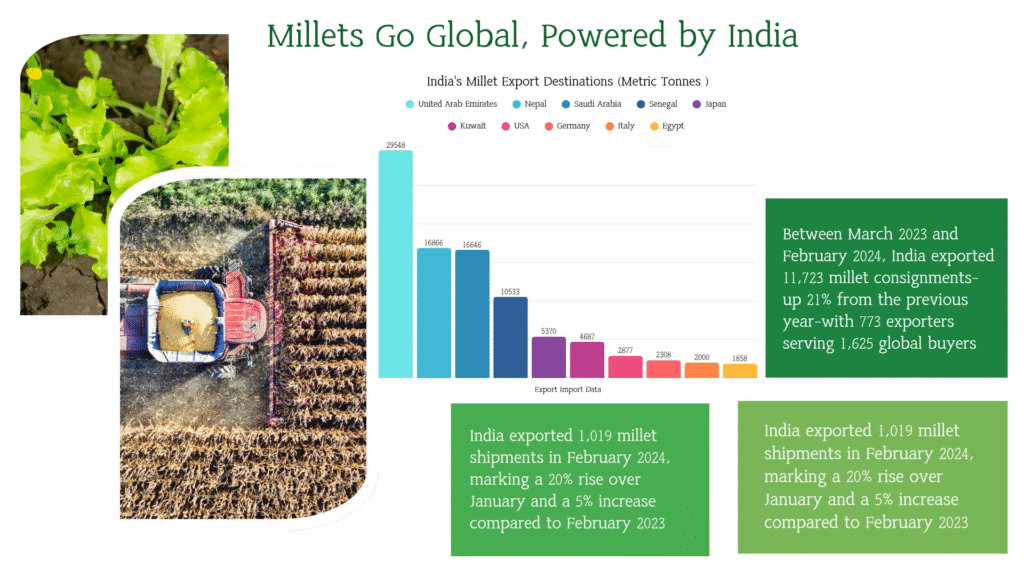
India has taken a lead in asserting genetic sovereignty. Under its Protection of Plant Varieties and Farmers’ Rights Act, farmers are legally recognized as breeders—an approach that contrasts sharply with the proprietary seed models of the Global North. Moves to secure Geographical Indications (GIs) for heritage grains like Ragi and Kodo millet go further, attempting to link legal protection with cultural identity. But implementation remains fragmented. Without robust digital registries, traceability protocols, and farmer awareness, the architecture of protection is little more than paper.
In Africa, the stakes are even sharper. Ethiopia’s battle over Teff patents—where foreign companies claimed exclusive rights to a national staple—triggered a wave of legislative pushback. Countries like Niger and Burkina Faso are now asserting their rights under the Nagoya Protocol, demanding benefit-sharing not just for seeds, but for any genomic data derived from them. Their argument is simple: biological assets from their lands should not become free inputs for corporate innovation.
The digital realm complicates this further. Genetic data—often stored in open-source databases—is increasingly being used by biotech firms without clear consent from source countries. While touted as “open science,” DSI is rapidly becoming the next frontier of biopiracy. Millets, once neglected, are now targets.
There is still time to get this right. Institutions like ICRISAT are piloting equitable genomics partnerships across India, Kenya, and Mali. These can become templates for a global millet commons—one that balances innovation with justice.
Popularizing Millets Isn’t Nostalgia—It’s Climate Strategy
The promotion of millets can no longer be viewed solely through the lens of cultural heritage or dietary diversification. In the current context of escalating climate volatility, widespread micronutrient deficiencies, and unsustainable agricultural intensification, millets represent a strategic convergence of agronomic resilience, nutritional density, ecological efficiency, and smallholder inclusivity.
Technically, millets outperform major cereals on multiple critical parameters: they require significantly less water, exhibit superior tolerance to heat and drought stress, and can be cultivated on marginal or degraded soils with minimal chemical inputs. From a public health perspective, their low glycemic index and high content of iron, calcium, dietary fiber, and essential amino acids position them as potent allies in combating non-communicable diseases and hidden hunger.
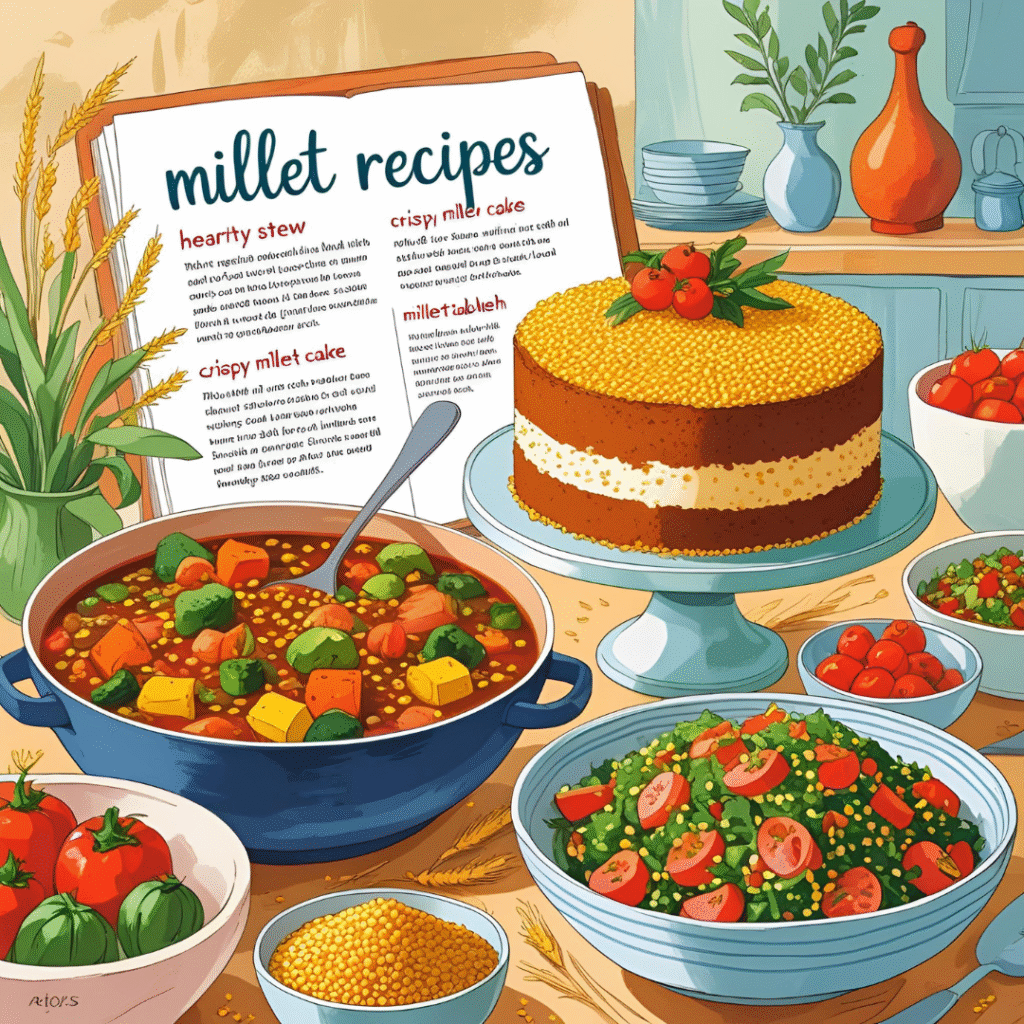
Despite these advantages, the systemic integration of millets into mainstream food and farming systems remains limited. Realizing their full potential requires coordinated action across several domains: policy alignment, market development, seed systems, value-added processing, institutional procurement, and consumer awareness. Millets must be repositioned from “fallback” to “frontline” crops—integrated into school feeding programs, mid-day meal schemes, biofortification strategies, export pipelines, and digital agri-platforms.
Furthermore, emerging innovations in genomic breeding, phenotyping, and climate-smart agronomy offer new pathways for improving yield stability and nutritional quality. These must be complemented by investments in decentralized R&D, public-private incubation, and inclusive value chain design—particularly to ensure uptake among small and marginal farmers.
Popularizing millets is thus not an exercise in crop diversification alone—it is a systemic response to overlapping risks in food, health, and climate. It offers a route to decentralizing nutrition, democratizing agricultural innovation, and building adaptive capacity in vulnerable agroecologies. Scaling millet adoption is not merely a campaign objective; it is an operational necessity for future-ready food systems.
—————– Suchetana Choudhury (suchetana.choudhuri@agrospectrumindia.com)